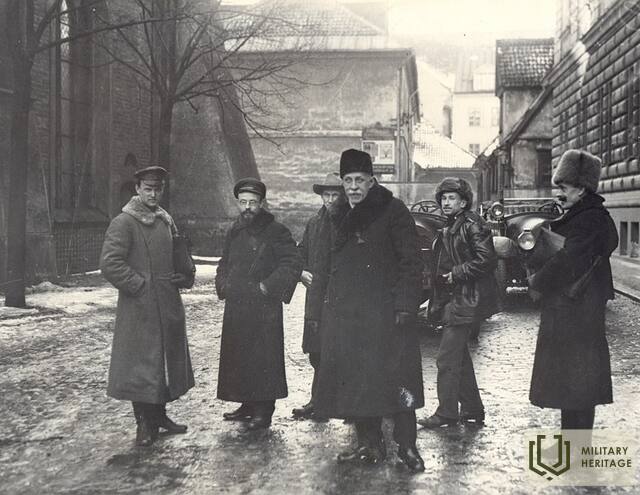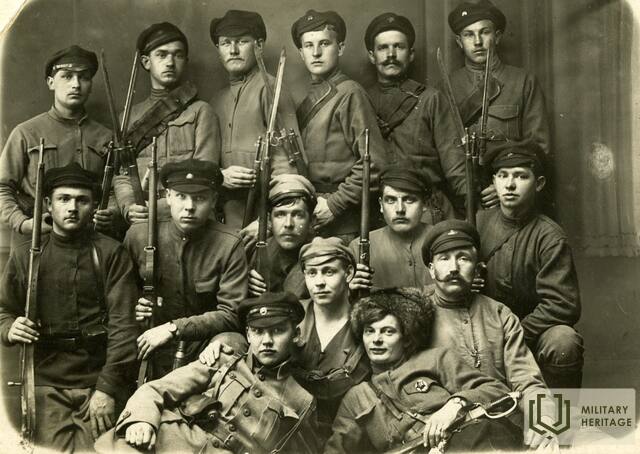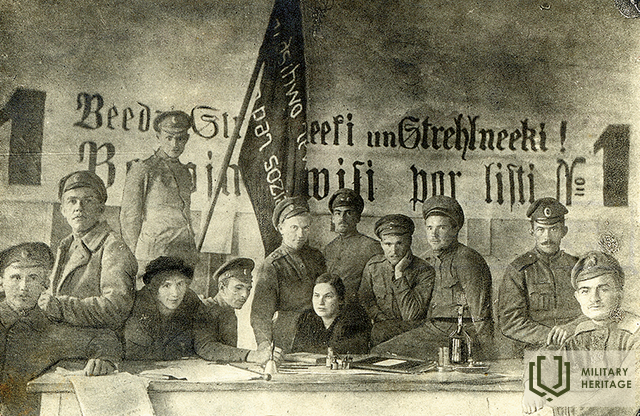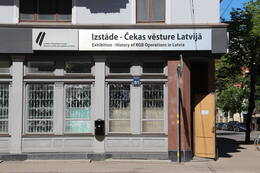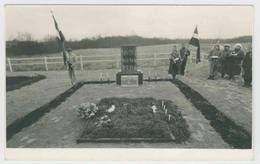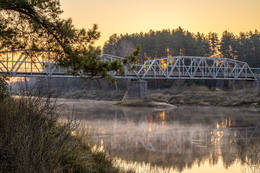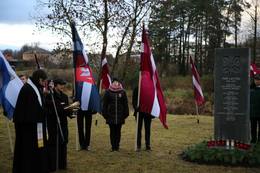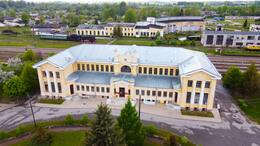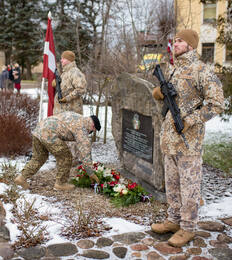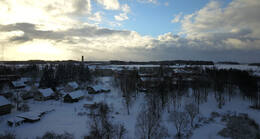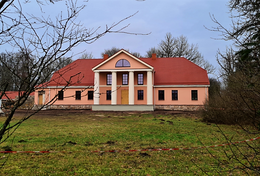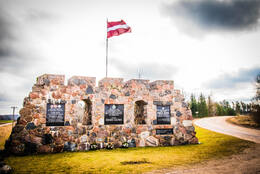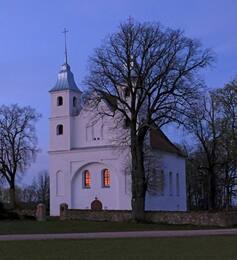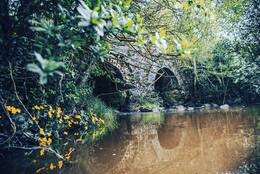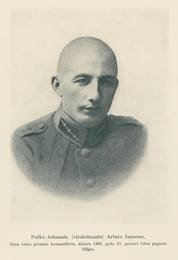Didieji I WW1, I Nepriklausomybės karai
Bigotai buvo radikalus Rusijos socialdemokratų darbininkų partijos sparnas, kuris 1912 m., vadovaujant Vladimirui Uljanovui (Leninui), laimėjo daugumą partijos suvažiavime ir atsiskyrė nuo partijos, suformuodamas Rusijos socialdemokratų darbininkų partiją (bolševikus). Nuo tada terminas „bigotai“ taip pat vartojamas priešpriešinant „mažumas“ arba mažumą.
Fanatikai nuo smulkiųjų skyrėsi tiek ideologiniais, tiek partijos organizaciniais aspektais. Fanatikai manė, kad partija turėtų būti organizuota kaip centralizuota kovos organizacija. Renkant narius, reikėjo griežtai laikytis klasinio principo. Partijos nariai turėjo laikytis drausmės, griežtai paklusdami partijos vadovybės – Centro komiteto – sprendimams. Pagrindinę partijos struktūrą turėjo suformuoti santykinai nedidelė profesionalių revoliucionierių grupė. V. Leninas manė, kad darbininkų klasė nėra pajėgi savarankiškai plėtoti socialistinių reikalavimų.
Didieji tikėjo, kad socializmo neįmanoma pasiekti evoliucijos (laipsniškų reformų), o smurtinės revoliucijos ir proletariato diktatūros, kaip pereinamojo režimo iš kapitalizmo į socializmą, būdu. Didieji griežtai priešinosi bendradarbiavimui su piliečių (buržuazijos) atstovais, leisdami jį tik išimtiniais atvejais. Didieji iš principo atmetė parlamentinę demokratiją, manydami, kad ji tarnauja buržuazijos klasės interesams. Jie agitavo už dirbančiųjų (proletariato) klasinį atstovavimą, o ne už nacionalinį atstovavimą.
1917 m. lapkričio 7 d. bolševikai įvykdė perversmą Rusijos sostinėje Petrograde (dabartinis Sankt Peterburgas), nuversdami Aleksandro Kerenskio vadovaujamą Laikinąją vyriausybę ir įsteigdami V. Lenino vadovaujamą sovietų vyriausybę. Bolševikų kontroliuojamoje Latvijos dalyje valdžia pamažu iškilo 1917 m. pabaigoje, kai valdžią perėmė Latvijos darbininkų, kareivių ir bežemių deputatų tarybos vykdomasis komitetas, arba Iskolatas (sutrumpintas pavadinimo vertimas į rusų kalbą). Naujoji vyriausybė pradėjo radikalias politines ir socialines reformas, įvesdama griežtą cenzūrą.
Sovietų valdžia neokupuotoje Latvijos dalyje truko neilgai – ji tetruko kelis mėnesius. Kai Vokietija atnaujino karo veiksmus Rytų fronte ir iki 1918 m. vasario pabaigos okupavo visą Latvijos teritoriją, bolševikų režimas Vidžemėje ir Latgaloje buvo sunaikintas. Bolševikai ir ištikimiausia šaulių dalis pabėgo į Rusiją.
Per šiuos kelis mėnesius dalis Latvijos gyventojų galėjo tiesiogiai susipažinti su bolševikų režimu veikiant. Iskolato veikla atskleidė keletą tendencijų, kurios visapusiškai išryškėjo po metų, bolševikams sugrįžus. Tai buvo: nedemokratinis režimo pobūdis, sutelkiant valdžią siauro partijos darbuotojų rato rankose; demokratiškai išrinktų institucijų likvidavimas ir žodžio laisvės varžymas; klasių kovos principo įgyvendinimas, kuris apėmė represijas prieš ištisas visuomenės grupes; ekonominės reformos, kurios pasireiškė daline įmonių nacionalizacija, dvarų konfiskavimu ir viso turto bei žemės nacionalizavimo kursu.
Laikydama komunizmo įgyvendinimą savo tikslu, bolševikų partija po 1917 m. perversmo pervadino save Rusijos komunistų (bolševikų) partija ir išlaikė šį pavadinimą iki 1925 m. Nuo 1925 iki 1952 m. partijos pavadinimas buvo „Visasąjunginė komunistų (bolševikų) partija“, o nuo 1952 iki 1991 m. – „Sovietų Sąjungos komunistų partija“. 1991 m. partija Rusijos Federacijoje buvo likviduota.
Daugiau informacijos šaltinių
1. Latvijos libertarai. Paskelbta portale ir.lv, 2018-01-03. Prieinama: https://ir.lv/2018/01/03/latviesu-lielineki/ [žiūrėta: 2021-05-06.].
2. Šiliņš J. "Lielineki". Nacionalinė enciklopedija. Prieiga: https://enciklopedija.lv/skirklis/88272-lielineki [žiūrėta 2021-05-06].
3. Šiliņš J. Daktaro disertacija „Sovietų Latvijos karinė ir politinė raida (1918 m. gruodžio mėn. – 1919 m. birželio mėn.)“, 2012. Prieinama: https://dspace.lu.lv/dspace/handle/7/4674 [žiūrėta: 2021-05-06].
4. Sielų pūga. Skaitmeninis muziejus. Prieinama: https://www.dveseluputenis.lv/lv/laika-skala/notikums/85/ziemassvetku-kauju-sakums/ [žiūrėta: 2021-05-06.].
Susijusi laiko juosta
Susijusios vietos
Paroda KGB pastate „KGB operacijų Latvijoje istorija“
Buvęs SSRS Valstybės saugumo komiteto (paprastai vadinamas Čeka) pastatas atviras lankytojams. Čia čekistai kalindavo, tardydavo ir žudydavo Latvijos piliečius, kuriuos okupacinis režimas laikė priešininkais. Taip pat eksponuojama Latvijos okupacijos muziejaus ekspozicija apie Čekos veiklą Latvijoje. Siūlomos ekskursijos po kalėjimo kameras, koridorius, rūsį ir kiemą. Namas pastatytas 1911 m. ir yra vienas gražiausių pastatų Rygoje. Liaudyje vadinamas „Kampiniu namu“, jis buvo baisiausias sovietinio okupacinio režimo simbolis Latvijoje ir vienas iš SSRS valdžios ramsčių. Čeka iš Kampinio namo veikė okupacijos metu nuo 1940 iki 1941 m., o vėliau nuo 1945 iki 1991 m. Dešimtys tūkstančių latvių nukentėjo nuo tiesioginio politinio persekiojimo. Kova su sovietų valdžios priešais tęsėsi ir po Antrojo pasaulinio karo. Čekos požiūris į savo veiklą šiek tiek pasikeitė po Stalino mirties. Fizinį kankinimą pakeitė psichologinis teroras. Dauguma Čekos agentų buvo latviai (52 %). Antra pagal dydį grupė buvo rusai – 23,7 %. 60,3 % agentų nebuvo Komunistų partijos nariai. 26,9 % agentų turėjo aukštąjį išsilavinimą. Sistema buvo sukurta taip, kad įtrauktų vietos gyventojus ir taip turėtų didesnę kontrolę visuomenėje. Personalo dokumentai ir tarnybos įrašai yra Rusijoje. Ši medžiaga nebuvo prieinama Latvijos valdžios institucijoms ir tyrėjams.
Žaliųjų partizanų atminimo akmuo
Įsikūręs Ērgliuose, Parko ir Saules gatvių kampe, netoli geležinkelio viaduko.
1919 m. gegužės 23 d. žalieji partizanai puolė bolševikų vežimų koloną Ērglių centre. Mūšis truko dvi valandas, partizanai paėmė į nelaisvę 78 arklius ir daug vežimų su šautuvais ir kitais daiktais. Mūšyje žuvo keturi partizanai, vienas buvo sužeistas. Iš viso regiono partizanų gretose kovojo 61 vyras, iš kurių žuvo šeši.
1939 m. gegužės 21 d. Ērglių kaime 121-asis Ērglių mažasis pulkas pastatė paminklinį akmenį toje vietoje, kur 1919 m. gegužės 23 d. žuvo Žalieji partizanai Jānis Andriksonas, Andrejus Bumbers, Kārlis Baņģieris ir Jānis Gūts.
Sovietų okupacijos metu Parko ir Saulės gatvių sankryžoje stovėjęs memorialas buvo nugriautas. Jis buvo restauruotas ir vėl pastatytas 1989 m. balandžio 22 d.
Geležinis tiltas per Gaujos upę Valmieroje
Įsikūręs Valmieroje, netoli Gimės gamtos tako Leono Paegles gatvėje.
Plieninio karkaso geležinis tiltas per Gaujos upę buvo pastatytas 1911 m. Jis sujungė 114 km ilgio maršrutą Ainaži–Valmiera–Smiltenė, kuris paskutinį kartą buvo baigtas statyti 1971 m.
Po Rygos išlaisvinimo 1919 m. gegužės 22 d., dalis sovietinės Latvijos armijos atsitraukė visu frontu, neparodydamos jokio rimtesnio pasipriešinimo. Gegužės 26 d. Estijos nacionalinė armija ir Šiaurės Latvijos brigada, vadovaujama pulkininko Jorgio Zemitano, užėmė Valmierą. „Apie šeštą valandą popiet didžiūnai susprogdino geležinkelio tiltą. 19:50 jie taip pat padegė abu medinius tiltus. Tai nesutrukdė Estijos kariuomenei tos pačios dienos vakare įžengti į miestą iš Valmieros dvaro* [...]“
Šiandien geležinis tiltas yra mėgstama poilsio ir pasivaikščiojimo vieta bei „Žaliojo geležinkelio“ dviračių maršruto atkarpa.
* Pirmiausia atvyko 6-ojo Estijos pėstininkų pulko kadetų kuopa, lydima kelių šarvuočių.
Atminimo stela Lāčplėsio karo ordino kavalieriams
Įsikūręs šalia Švenčiausiosios Jėzaus Širdies Romos katalikų bažnyčios Viliake.
2017 m. lapkričio 11 d. Viliakos savivaldybėje buvo atidengta atminimo stela Lačplėsio karo ordino kavalieriams. Su Viliakos savivaldybės vardu susiję 28 Lačplėsio karo ordino kavalerių likimai.
Granito stela buvo sukurta įgyvendinant projektą „Prisiminkite Lačplėšį“, skirtą Latvijos valstybės šimtmečiui. Pagerbiant Latvijos Nepriklausomybės kare žuvusius karius, visoje Latvijoje bus įrengta uniformos modelio memorialinė stela. Projekto iniciatorius – Jaunimo gvardijos ir informacijos centras.
Penki Lačplėsio karo ordino riteriai, kurių vardai iškalti memorialinėje steloje, po Nepriklausomybės karo pabaigos gyveno dabartinio Viljakos rajono teritorijoje:
– Jānis Kuļšs buvo jaunas ūkininkas Apsīšuose, Šķilbenų valsčiuje,
– Aleksejus Ľubimovas (Lavrentjevs) gyveno Šķilbėnų valsčiaus Fortepjanovos vienkiemyje, vėliau – Viļakuose,
– Teodoras Mende tvarkė jam priskirtą ūkį ir buvo miškininkas Katleši kaime, Žīgurių valsčiuje,
– Eduardas Tenisonas gyveno Vecumu stotyje, vėliau Čabatrovos kaime ir dirbo „Viliakos“ pašte,
– Šķilbėnų valsčiuje kurį laiką gyveno Jānis Burmeistars po 1928 m.
Viliakos rajono Brolių kapinėse palaidoti 45 kariai, paaukoję savo gyvybes gindami Latviją nuo bolševikų 1920 m. Sausio 9 d. Šiaurės Latgaloje prasidėjo puolimai, ir nepaisant tuo metu vyravusių sunkių oro sąlygų, Viliaka tą pačią dieną buvo išlaisvinta.
Viliakos krašte vykusių Latgalos išlaisvinimo mūšių metu Estijos kareiviai petys į petį kovojo su Latvijos armijos kareiviais ir partizanais prieš Raudonąją armiją. Daugelis jų paaukojo savo gyvybes už laisvą Latviją.
Gulbenės geležinkelio stotis
Gulbenės geležinkelio stotis yra Gulbenės mieste. Pirmojo pasaulinio karo metu, 1916–1917 m., siaurojo geležinkelio linija į Pliaviņas buvo rekonstruota iki 1524 mm pločio, kad galėtų būti sujungta su Rygos–Daugpilio linija. Be to, buvo nutiesta geležinkelio linija į Ierikius ir Sitą, taip užtikrinant susisiekimą su Pytalovu. Dėl to Gulbenė tapo geležinkelio mazgu. Dabartinis stoties pastatas, kurį suprojektavo architektas Pēteris Federsas, buvo pastatytas 1926 m. Nepriklausomybės kovų metu, 1919 m. gegužės 31 d., kai Gulbenė buvo išlaisvinta iš bolševikų, 1-asis (4-asis) Valmieros pėstininkų pulkas čia surinko nemažą kiekį karo trofėjų. 1941 m. birželio 14 d. iš Gulbenės geležinkelio stoties buvo deportuoti tiek civiliai gyventojai, tiek Latvijos armijos karininkai, suimti Litenės vasaros stovykloje. Būdamas svarbiu mazgu, jis buvo subombarduotas 1944 m. pavasarį. Po karo jis buvo atkurtas į pradinę formą. 2018 m. atidarytas edukacinis ir interaktyvus centras pavadinimu „Geležinkelis ir garas“. Šalia Gulbenės stoties yra bendrovė SIA „Gulbenes – Alūksnes bānītis“, siūlanti interaktyvias pamokas ir ekskursijas. Lankytojai gali apžiūrėti stoties pastatą ir platformą, atminimo lentą ir skulptoriaus Indulio Rankos sukurtą paminklą represuotiems.
Skrundos mūšio memorialas ir vėliavos diena
Skrundos mūšio memorialas yra Skrundos centre, Oskaro Kalpakos parke netoli Skrundos kultūros namų, Kuldygos ir Liepojos gatvių sankryžoje. 2005 m. prie memorialo buvo pastatytas akmuo, skirtas 1919 m. sausio 29 d. mūšiui atminti, kai Oskaro Kalpako vadovaujamas batalionas kartu su vokiečių ir rusų Landesvero daliniais išvadavo Skrundą nuo bolševikų. Vėliavos dienos tradicija tęsiama nuo 2004 m., minint pirmąjį iš bolševikų išlaisvintą miestą ir jo išvaduotojus, kurie 1919 m. sausio 29 d. Skrundos bažnyčioje iškėlė Latvijos vėliavą.
Pirmaisiais Nepriklausomybės karo mėnesiais Latvijos laikinoji vyriausybė, spaudžiama bolševikų, sparčiai prarado teritoriją. 1919 m. sausio 22 d. bolševikai užėmė Skrundą. Po savaitės, sausio 29 d., ankstyvą rytą, prasidėjo puolimas Skrundai atsiimti. Latvijos atskirasis batalionas, vadovaujamas pulkininko leitenanto Oskaro Kalpako, turėjo pulti Rudbāržu-Skrundos plentu ir išstumti bolševikus iš Skrundos. Po to turėjo vykti vokiečių dalinių flanginis puolimas, kurio užduotis buvo sunaikinti artėjantį priešą, o rusų kuopa turėjo pulti tarp Latvijos ir Vokietijos dalinių, orientyru naudodama Skrundos bažnyčią. Puolimą taip pat rėmė vokiečių artilerijos baterija. Puolimo dieną buvo 15 laipsnių šalčio, švietė ryški saulė, kalpakai turėjo kirsti giedrą lauką, o bolševikai slėpėsi dvaro akmeniniuose pastatuose. Bolševikai atidengė ugnį, kai užpuolikų grandinė buvo nutolusi apie 300 metrų, kilo abipusis susišaudymas, ir Oskaro Kalpako vadovaujami kareiviai sparčiai puolė į priekį, priversdami priešą nutraukti ugnį ir trauktis per Ventą. Po maždaug 3 valandų kovos Skrunda buvo užimta apie 9 val. ryto, Latvijos atskirajame batalione buvo sužeisti tik 2 kariai.
Skrundos mūšis turėjo didelę reikšmę Latvijos laikinosios vyriausybės ginkluotų Speko karių moralei, nes tai iš tikrųjų buvo pirmoji reikšminga pergalė mūšiuose prieš bolševikus. Be to, pats vadas Oskaras Kalpakas mūšyje demonstravo ypatingą drąsą, savo pavyzdžiu skatindamas karius nebijoti.
Jaunmuiža ir 1-asis Latvijos atskirasis batalionas
Šiandien Jaunmuiža, anksčiau Jaunāmuiža, yra apgyvendinta vieta Kuldygos savivaldybėje, esanti prie Skrundos–Ezerės kelio, 7 kilometrų atstumu. Gyvenvietė buvo įkurta buvusių Jaunos dvaro (Neuhof) pusrūmų vietoje.
1919 m. kovo 3 d. dėl šios vietos vyko įnirtingos kovos tarp pulkininko Oskaro Kalpako vadovaujamo 1-ojo Latvijos atskirojo bataliono ir 2-ojo sovietų Latvijos šaulių pulko dalinių.
1919 m. kovo 3 d. prasidėjo Kuršo išlaisvinimo operacija „Tauwetter“ („Atlydys“), kurios metu Vokietijos armijos VI rezervinis korpusas su Landesveru ir jo 1-uoju Latvijos batalionu pradėjo puolimą per frontą, siekdami nustumti bolševikų dalinius į Lielupę. Kovo 3 d. ankstų rytą 1-ojo Latvijos atskirojo bataliono – Cėsių kuopos, Studentų kuopos ir kavalerijos divizijos – daliniai, sustiprinti vokiečių hauptmano Müllerio artilerijos baterijos, perėjo Ventą ties Lėnais ir puolė Jaunų dvarą, kurį gynė 2-ojo sovietų Latvijos šaulių pulko 2-asis batalionas. Kelias valandas trukusio mūšio metu, palaipsniui užimdami namus Jaunosios muižos apylinkėse, Kalpakos vadovaujami daliniai pasiekė Jaunąją muižą ir perėmė Skrundos–Pampalių plentą, nutraukdami priešo judėjimą ir stumdami priešą į rytus. Jaunosios muižoje batalionas kaip trofėjus gavo kanceliarinių prekių ir šaudmenų. Užimdamas pozicijas netoliese esančiuose namuose, batalionas įsitvirtino. Kovo 5 d. prasidėjo bolševikų kontrataka, kuri vakare buvo sustabdyta. Kovo 6 d. batalionas atnaujino puolimą, užėmė Skrundos mokyklą ir žygiavo Airitės-Aizupjų apylinkių link.
Lėtas dvaras
Dvaro pilis yra Lėnų kaime, prie Ventos upės. Šiuo metu pilis yra privati nuosavybė, todėl ją galima pamatyti tik iš tolo.
Dvaro rūmai nuo 1919 m. sausio pabaigos iki kovo 3 d. buvo naudojami kaip 1-ojo Latvijos atskirojo bataliono atramos punktas. Latvijos atskirasis batalionas turėjo išlaisvinti Leni dvaro apylinkes, kad galėtų kirsti upę priešais Jaunmuižą.
Dvaras priklausė baronui Friedrichui von Firksui, kuriam taip pat priklausė Rudbāržzi ir Sieksate dvarai. Dvaro rūmai buvo pastatyti XIX a. Baronui Lēnu pilis daugiausia tarnavo kaip medžioklės ir savaitgalio poilsio vieta.
Nuo 1927 iki 1937 m. pilyje veikė mokykla, o sovietų okupacijos metu – kolūkio medienos dirbtuvės. 1965 m. atidarytas bendruomenės centras. Pastatų ansamblis buvo daug kartų pertvarkytas, o parkas neišsaugotas. Išliko keli ūkiniai pastatai.
1-ojo Latvijos atskirojo bataliono memorialas Lėnuose ir perkėlimo vieta prie Ventos upės
Paminklas yra Lėniuose, kelių sankryžoje netoli Lėnių dvaro.
Paminklas atidengtas 2007 m. lapkričio 8 d. Jį sukūrė skulptorė Maija Engele. Paminklo autorius ir finansuotojas yra Janis Blūms, kurio tėvas leitenantas Paulis Blūms, 1-ojo atskirojo Latvijos bataliono kavalerijos divizijos pirmasis leitenantas, 1919 m. kovo 3 d., padedamas 10 vyrų, organizavo ir vadovavo upės perėjimui.
Kasmet kovo 3 d. čia susirenka jaunieji sargybiniai, kariai ir kiti susidomėję asmenys, vykstantys 1-ojo Latvijos atskirojo bataliono pagerbimo renginyje.
Švenčiausiosios Trejybės Romos katalikų bažnyčia Lėni mieste
Bažnyčia yra Lēnu kaime, Nīkrāce parapijoje, Skrundos savivaldybėje, prie kelio Skrunda – Embute.
Netoli bažnyčios teka Ventos upė, kurios krantus 1919 m. vasarį saugojo 1-ojo atskirojo Latvijos bataliono kariai. Kadangi bataliono karių skaičius neleido sukurti ištisinės fronto linijos, frontą saugojo sargybos postai. Vienas iš jų taip pat buvo įsikūręs upės krante netoli bažnyčios. Bažnyčios bokštai buvo naudingi stebint apylinkes ir kitą upės pusę.
Mūšis Skrundos mokykloje
Skrundos mokykla yra Pumpuruose, Skrundos–Ežerės kelio 3 km. Mokykla yra privati, todėl ją galima pamatyti iš tolo.
1919 m. sausio ir kovo mėnesiais 1-asis Latvijos atskirasis batalionas netoli mokyklos kovėsi su Sovietų Latvijos 2-ojo Latvijos šaulių pulko daliniais.
Mūšis prie Skrundos mokyklos įvyko 1919 m. sausio 22 d. Susidūrę su besitraukiančia bolševikų persvara, vokiečių ir latvių daliniai išsidėstė vakariniame Ventos krante, o bolševikų pajėgos, ruošdamosi platesnei operacijai, susirinko Salduse, tuo pačiu metu siųsdamos dalį savo pajėgų Skrundos kryptimi. Siekdamos perimti iniciatyvą ir pabandyti dalimis nugalėti bolševikų pajėgas, sausio 22 d. 1-ojo Latvijos atskirojo bataliono Cėsių kuopa, sustiprinta 15 karininkų kuopos ir vokiečių Radeno kuopos, dislokuotos Skrundos fronto sektoriuje, karių, turėjo pulti Salduse. Abiejų kuopų susibūrimo vieta buvo paskirta Skrundos mokykla. Tačiau parengiamajame puolimo etape abi kuopas užklupo bolševikų puolimas, priversęs vokiečių ir latvių dalinius trauktis į Rudbāržius.
Antrasis susirėmimo Skrundos mokykloje etapas įvyko 1919 m. kovo 6 d., kai pulkininko Oskaro Kalpako vadovaujamo bataliono Cėsių ir Studentų kuopos užklupo priešą, užėmė Skrundos mokyklą ir toliau žygiavo Dutėnų, Engurniekių ir Airytės link.
Skrundos–Ežerės kelio pakraštyje, netoli mokyklos, kur kelias kerta Klūgos upę, yra nedidelis, senovinis XIX a. pabaigos akmeninis tiltas su dviem puslankiais, skirtas upei pratekėti. Kelias, vedantis per tiltą, anksčiau buvo naudojamas, tačiau dabar pamažu apauga žole, nes naudojamas greta esantis asfaltuotas kelias ir tiltas. Nuo šio tilto atsiveria nuostabus vaizdas, kurį praturtina uolėta upės vaga ir tankiais medžiais apaugę krantai. Vietovė vizualiai labai patraukli ir tinkama dviračių ar pėsčiųjų maršrutams.
Paminklas pirmojo Cėsių kuopos mūšio vietoje
Įsikūręs Drabešių valsčiuje, Vidžemės plento 79 kilometre.
Matomas iš granito pagamintas paminklas, kuriame iškalta stilizuota bolševikų invazijos maršruto schema.
Paminklas buvo atidengtas ir pašventintas 2018 m. gruodžio 28 d. Drabešių valsčiuje 1918 m. gruodžio 24 d. kapitono Artūro Jansono (1893–1941) žvalgybos komanda intensyvia kulkosvaidžių ugnimi sustabdė Raudonosios armijos žvalgybos puolimą iš Cėsių į Ierikius. Tai buvo pirmasis ginkluotas Latvijos kariuomenės susidūrimas su Sovietų Rusijos Raudonąja armija.
Susijusi istorija
Šiaurės Latgalos išlaisvinimas nuo bolševikų
1918 m. gruodžio 1 d. Raudonosios armijos daliniai, sudaryti iš raudonųjų šaulių dalinių, įsiveržė į Latvijos teritoriją. Siekdami apsaugoti savo namus, šeimas, gimtąjį kraštą ir išvengti teroro, Balvių apylinkių vyrai griebėsi ginklų ir patraukė į miškus, prasidėjo pirmųjų „žaliųjų“ grupių formavimasis. 1919 m. pavasarį, paskelbus mobilizaciją, daugelis Balvių apylinkių vyrų laikė nepriimtiną kovą sovietinėje Latvijos armijoje ir prisijungė prie „žaliųjų“ grupių. Buvo suformuotos Balvių, Silakrogo, Rugėjų, Teteru-Dūrupės ir Liepnos grupės. „Žaliųjų“ grupių veikla Balvių apylinkėse suaktyvėjo 1919 m. kovo mėn.
Apie nacionalinį patriotą pirmąjį leitenantą Vilį Gelbį
Pulkininko leitenanto Vilio Gelbės (1890–1919) likimas atspindi sunkią situaciją kuriant mūsų valstybę ir kariuomenę, taip pat šių įvykių vertinimą.
1918 m. lapkričio 18 d. paskelbus Latvijos valstybę, prasidėjo Latvijos nepriklausomybės karas ir ginkluotųjų pajėgų kūrimo darbai. Pirmosiose Latvijos savanorių kareivių gretose buvo Kurše gimęs jūrų leitenantas Vilis Gelbė.
Apie Latvijos Nepriklausomybės karą ir 1918 m. įvykius Alūksnėje
1918 m., kai vokiečių kariuomenė įžengė į Alūksnę, Latvijos šaulių batalionai atsitraukė į Sovietų Rusiją. Iki 1918 m. gruodžio pradžios buvo įtvirtintas vokiečių režimas ir vykdomos reorganizacijos. Vokietijai kapituliavus kare, bolševikai grįžo į Alūksnę ir atkūrė savo valdžią. Suomijos savanoriai taip pat kovojo Estijos armijos sudėtyje Latvijos Nepriklausomybės kare. 1919 m. vasario 21 d. Alūksnėje, netoli stoties, vyko įnirtingi mūšiai tarp bolševikų ir Suomijos savanorių pulko „Šiaurės berniukai“.
Apie Latvijos Nepriklausomybės karą ir 1919 m. įvykius Alūksnėje
1919 m. kovo 27 d. 1-asis Valmieros pėstininkų pulkas kartu su Talino (tuometinio Rėvelės) ir Tērbato Estijos gvardijos (kaitselit) batalionais bei trimis šarvuočiais traukiniais pradėjo Latvijos išlaisvinimą nuo bolševikų nuo Melnupės upės krantų.
Anšlavo Eglīčio prisiminimai apie Latvijos nepriklausomybės karą ir 1919 m. įvykius Alūksnėje
1919 m. kovo 27 d. 1-asis Valmieros pėstininkų pulkas kartu su Talino (tuometinio Rėvelės) ir Tērbato Estijos gvardijos (kaitselit) batalionais bei trimis šarvuočiais traukiniais pradėjo Latvijos išlaisvinimą nuo bolševikų nuo Melnupės upės krantų.
Suomijos savanorių pulko „Šiaurės berniukai“ mūšis Bejoje
1919 m. vasario 23 d. Suomijos savanorių pulko „Šiaurės berniukai“ žvalgybos dalinys, tikėdamasis gauti papildomų ginklų ir amunicijos, atvyko į Bejos mokyklos daubą, kur įvyko susidūrimas su bolševikais (Babeckos mūšis). Šiame mūšyje žuvo 10 Suomijos pulko kareivių.
7. Siguldos pėstininkų pulko formavimas
1919 m. birželio 20 d. Naukšėnų dvare, netoli Rūjienos, Šiaurės Latvijos brigados vado pulkininko Jorgio Zemitano įsakymu pradėtas formuoti 7-asis Siguldos pėstininkų pulkas. Iš pradžių iš Šiaurės Latvijos brigados rezervinio bataliono buvo suformuota nedidelė kovinė grupė, susidedanti iš 22 karininkų ir 1580 kareivių, kuri, pagerbiant pirmąjį vadą Oskarą Dankerį, buvo pavadinta Dankerio divizija. Po kelių dienų divizija buvo įtraukta į 3-iojo Jelgavos pulko 2-ąjį batalioną, o rugpjūčio 23 d., pridėjus kuopą, – į 7-ąjį Siguldos pėstininkų pulką.
Šiaurės Latvijos armijos įkūrimo Rūjienos pusėje fragmentas
Šiaurės Latvijos armija buvo Latvijos karinis darinys, veikęs Latvijos nepriklausomybės karo metu, suformuotas nuo 1919 m. vasario 3 d. iki kovo 31 d. Estijos teritorijoje ir Šiaurės Vidžemės regionuose, kuriuos išlaisvino Estijos armija. Iki 1919 m. liepos mėn. brigada logistikos ir operacijų požiūriu buvo pavaldi Estijos ginkluotųjų pajėgų štabui ir Estijos armijos vyriausiajam vadui. Vėliau ji buvo sujungta su Pietų Latvijos brigada, sudarant Latvijos armiją.
Cėsių mūšio pradžia, eiga ir pabaiga
Pergalė Cėsių mūšyje turėjo tapti lūžio tašku Latvijos ir Estijos kovoje už savo šalies nepriklausomybę. Ši pergalė sustabdė Andrijevo Niedros vyriausybės ir vokiečių generolo Rüdigerio fon der Golco planus užkariauti Pabaltijį. Vietoj to, Liepojoje savo veiklą atnaujino Karlio Ulmanio vadovaujama Laikinoji Latvijos vyriausybė.
1-asis Latvijos atskirasis batalionas perplaukė Ventą 1919 m. kovo 3 d.
Vienas pagrindinių 1-ojo Latvijos atskirojo bataliono dalinių iššūkių buvo kirsti užšalusią Ventos upę ir nutiesti kelią per ją.
Kapitono Aleksandro Levingo prisiminimai apie žvalgybinę ekspediciją virš Ventos netoli Leno
1919 m. vasarį abiejose Ventos upės pusėse vyko aktyvi žvalgyba. Vienas iš žvalgybinių reidų vadų buvo kavalerijos divizijos viršininkas kapitonas Aleksandras Loevingas.
Skrundos mokyklos mūšis 1919 m. sausio 22 d.
Vado leitenanto Janio Ķīselio prisiminimai apie kautynes Skrundos mokykloje 1919 m. sausio 22 d.
Iš Ádolfo Erso knygos „Vidzemė kovoje už laisvę“ apie pabėgėlių kelionę Valkoje
Nuo pabėgėlių laikų Valkai buvo skiriamas svarbesnis vaidmuo nei kitiems Vidžemės miestams, nes čia buvo leidžiamas politiškai aktyvus laikraštis „Līdums“, kuriame buvo kaldinami Latvijos dvasiniai ir politiniai ginklai, taip pat todėl, kad tai buvo kryžkelė, kurioje susitiko keliai iš trijų Latvijos pusių: iš Rygos, Alūksnės, Mozekilės, taip pat iš Estijos ir Rusijos. Ji turėjo ryšių su pabėgėliais iš visų pusių – Tartu, Pliskos, Maskvos ir Sankt Peterburgo. Čia buvo didelis pabėgėlių centras.
Kaip Latvijos valdžios pareigūnai apgavo Pampalių bolševikų šalininkus
Buvęs Pampalių mokyklos direktorius (iki 1959 m.) Alfrēdsas Brūnas asmeniškai surinko įspūdingą knygą apie Pampalių mokyklos istoriją ir su ja susijusius istorinius įvykius su autentiškomis nuotraukomis. Knygoje A. Brūnas aprašo Nepriklausomybės karo įvykius Pampalyje, išsamiai aprašydamas įvykius, susijusius su Latvijos valstybės veikėjais, bolševikų rėmėjais, Vokietijos armijos veiksmais ir kt.




